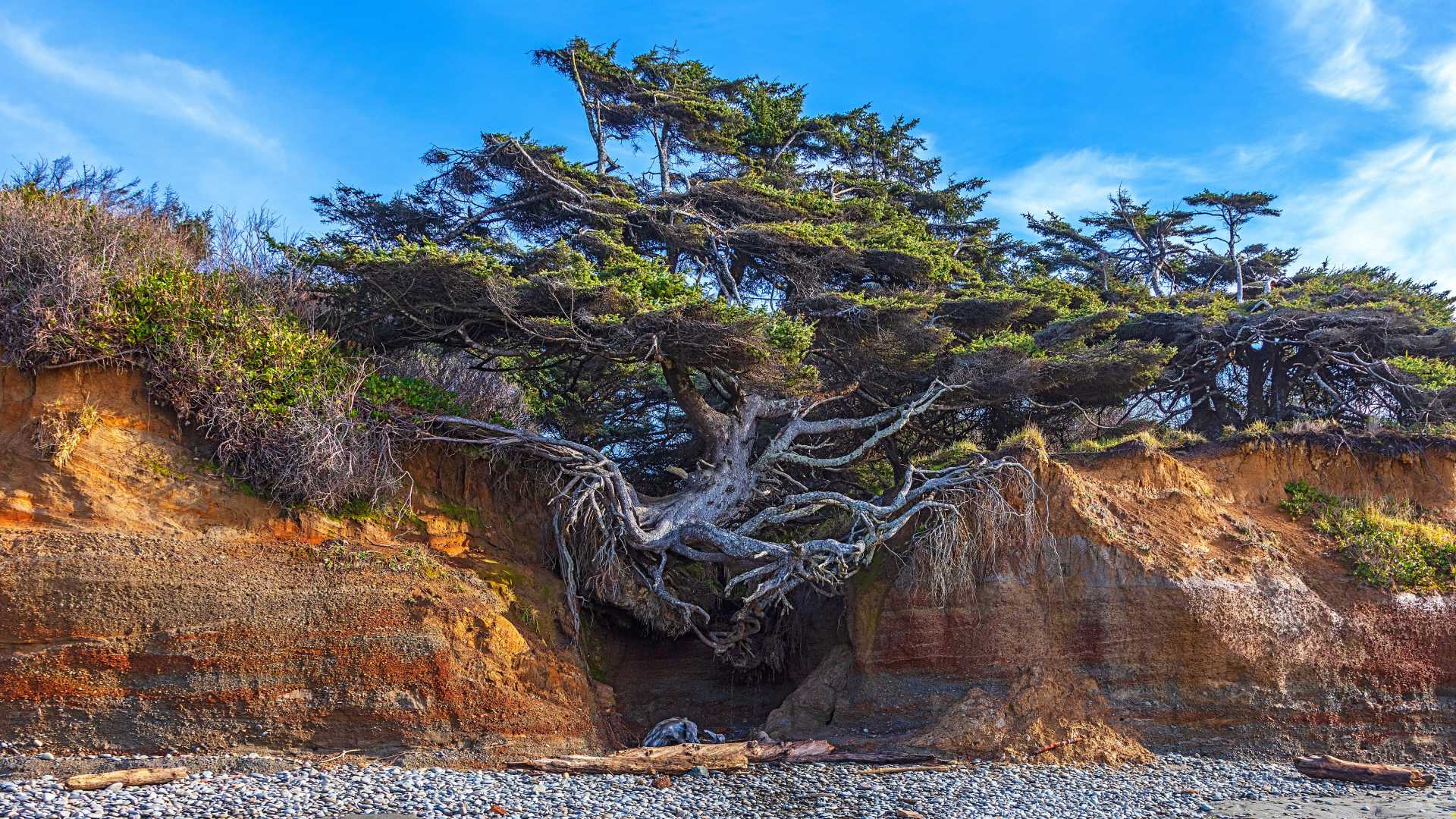News
Iconic ‘Tree of Life’ in Olympic National Park Faces Imminent Collapse

KALALOCH, Wash. — The iconic Tree of Life, a gravity-defying Sitka spruce perched precariously on a seaside bluff in Olympic National Park, is struggling to survive after recent winter storms accelerated erosion beneath its roots. The tree, a beloved natural wonder, has dropped five feet in recent weeks and now teeters on the brink of collapse.
The Tree of Life, located on Kalaloch Beach, has long captivated visitors with its unique appearance. Its massive root system spans an open cave in a small cliff, creating a natural bridge that supports the 40-foot-tall tree. Once a hidden gem known mostly to locals, the tree gained widespread fame through hiking blogs and social media, earning a near-perfect 4.9-star rating on travel platforms.
Decades of erosion, exacerbated by a culvert built in the 1960s to supply water to a nearby campground, have gradually undermined the tree’s foundation. Recent storms have worsened the situation, with powerful runoff and storm surges enlarging the cave beneath the tree. “It’s a testament to all of us to continue trying and giving our all for the sake of living life to the fullest,” wrote one visitor in a reflective online review.
Despite its precarious position, the tree has clung to life, supported in part by logs washed into the cave by recent tides. However, the National Park Service has no plans to intervene. “We’ll let what passes for nature take its course,” said Janet Cole of Olympic National Park in an interview with Seattle Met.
The Quinault tribe, whose reservation is nearby, named the area Kalaloch, meaning “a good place to land.” The name holds special significance for the Tree of Life, which sprouted from a seed long ago and has become a symbol of resilience. Visitors hoping to see the tree while it still stands can find it just west of U.S. Highway 101, near the historic Kalaloch Lodge.
As climate change continues to reshape Olympic National Park, with rising tides and receding glaciers, the Tree of Life serves as a poignant reminder of nature’s fragility. Its eventual collapse, whether sudden or gradual, will mark the end of an era for one of the park’s most enduring landmarks.












